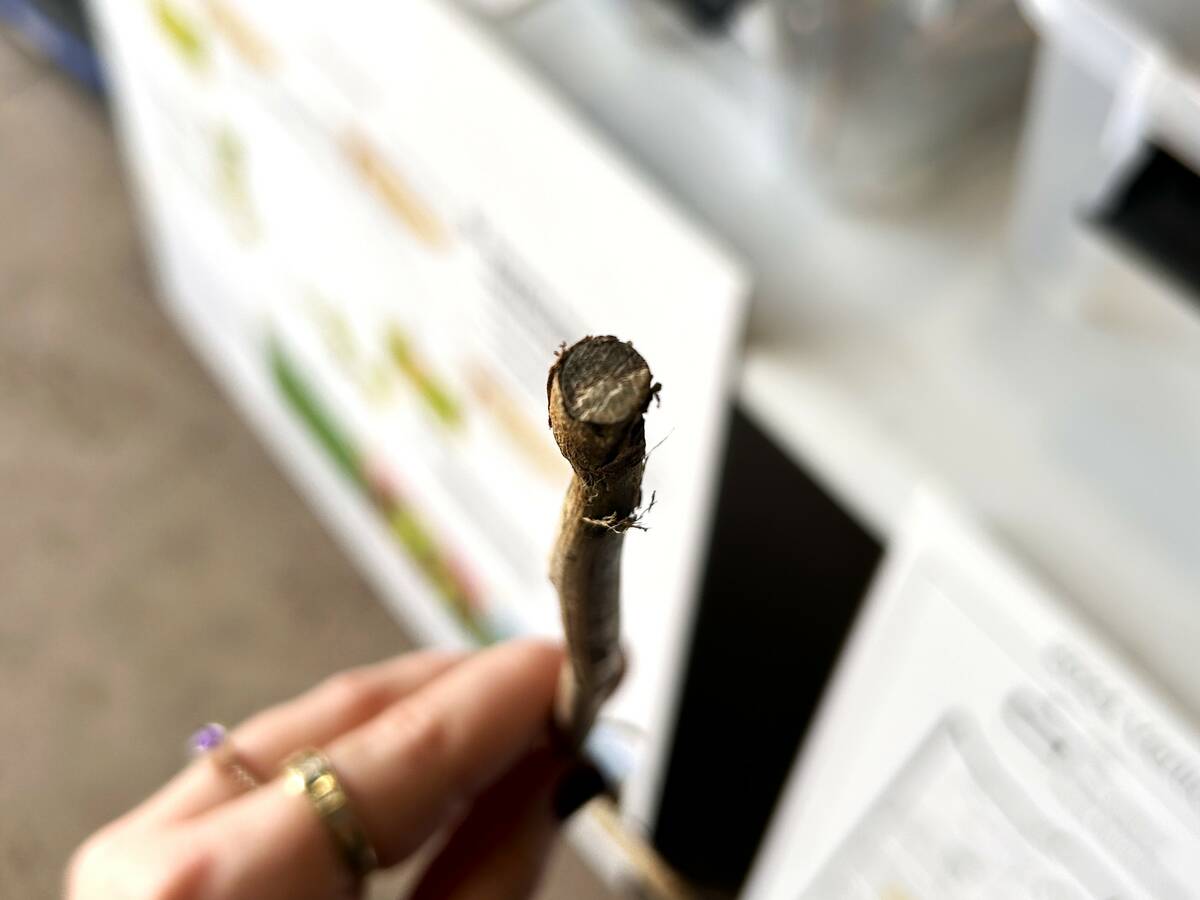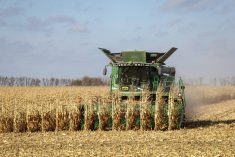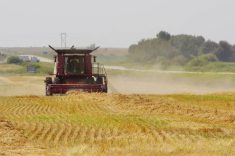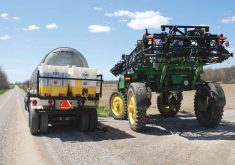Invasive Species Awareness Week occurs during the last week of April in Manitoba.
The Manitoba Weed Supervisors Association (MWSA) recognizes this week by highlighting a few of the invasive plants considered to be a significant threat to the landscape of our province. Many of these invasive species are mistaken for wildflowers, but unlike native wildflowers, these species threaten agricultural productivity, waterways and natural areas.
The Noxious Weeds Act of Manitoba requires control or destruction measures for different invasive plants. A comprehensive list of noxious weeds is found in the Noxious Weeds Regulation, which ranks plants according to their threat levels and specifies the areas of the province where these levels apply.
Read Also

Manitoba canola embattled by verticillium
Verticillium stripe pressure has been growing in Manitoba, and canola farmers still have precious few tools to protect their crop from the disease.
The act requires that Tier 1 weeds must be eradicated without conditions. This includes current threats like diffuse and spotted knapweed, orange hawkweed, red bartsia, Palmer amaranth and tall waterhemp.
Tier 2 weeds are also a significant concern and include leafy spurge, common tansy, field scabious and nodding thistle.
The MWSA is comprised of weed supervisors individually employed by weed control districts formed by one or more municipalities. These supervisors are authorized through the Noxious Weeds Act to ensure problematic weeds are dealt with appropriately on all lands in the districts they cover.
The districts, first introduced in 1964, have developed programs to deal with invasive plants such as leafy spurge and red bartsia. Prevention measures, early detection and rapid response are all critical for protecting habitats and agricultural land from these types of invasive species.

Tall waterhemp (Ameranthus tuberculatus)
Waterhemp is native to the U.S., but was not considered a major agronomic problem until the 1980s. Herbicide resistance and changing production systems, including more corn and soybeans, reduced tillage. Greater reliance on herbicides for weed control favoured the “weediness” of this plant.
This member of the pigweed (amaranth) family can rapidly take over cropland and significantly decrease yields. Its native habitat is wet, low-lying areas, but it also grows well in drier areas. It thrives in reduced tillage and no-till environments. Watch for patches along field edges or near field entrances, as well as along ditches and waterways.
The plant typically grows six to eight feet tall with glossy, hairless and more elongated leaves compared to redroot or smooth pigweed. Waterhemp is well adapted to warm temperatures and intense sunlight and is capable of producing up to a million seeds per plant, which can germinate over the whole summer.
Waterhemp has very tiny seeds similar to redroot pigweed seed, making it easily transported via equipment, water flows or wildlife. It can also be a contaminant in seed lots.
Removing small patches of waterhemp prior to seed set and destroying the plants is one of the most effective strategies to eradicate this weed. Tall waterhemp populations can be resistant to multiple herbicide groups, making it very hard to control.
Waterhemp samples in Manitoba have been tested and confirmed resistant to three herbicide groups. This has serious implications for local producers.
New populations have been discovered since it was first detected in Manitoba in 2019. The latest distribution map from Manitoba Agriculture reported it in 19 municipalities as of 2023.
Palmer amaranth (Amaranthus palmeri)
Palmer amaranth is an aggressive, invasive weed native to the desert regions of the southwest U.S. and northern Mexico. It was accidentally introduced to other areas and has devastated crops in the southern U.S. and Midwest as it rapidly became herbicide resistant.

With the ability to emerge all season, grow two to three inches per day and set seed over the entire season, this highly invasive weed can drastically reduce crop yield. Infestations have slowly moved north through contaminated seed, equipment, animal feed and bedding, and in the digestive tracts of wild birds.
Palmer amaranth was first detected in North Dakota in 2018 and is spreading throughout the state. Considered to be the No. 1 weed in the U.S., this plant can grow 10-12 feet tall and produce one million seeds. Heavy infestations can reduce soybean and corn yields by approximately 80-90 per cent.
In the same family as redroot pigweed and tall waterhemp, Palmer amaranth can be difficult to distinguish from its cousins. Smooth-stemmed like tall waterhemp, its leaves are a little wider, more like redroot pigweed, but can be distinguished by the long petiole (stem-like structure that attaches the leaf to the main stem). Petioles of Palmer amaranth are longer than the leaves, while its cousins have shorter petioles. Long, snaky seed heads that can be up to two feet long are another distinctive feature.
Identification is crucial and removal of individual plants and small patches is critical to prevent this weed from establishing in our province.
So far, spread in Manitoba has been limited. Two plants were found in the RM of Dufferin in 2021; a single plant was found in 2022 in the same area. No new detections were reported last year.
Nodding thistle (Cardus nutans)
Nodding thistle is an invasive species accidentally introduced to Manitoba more than 100 years ago as a contaminant in forage seed. It grows as a biennial (two-year growth cycle), invading dry areas such as heavily grazed rangeland and coarse soils.
Its stalks and leaves have strong, sharp spines that can injure livestock. Animals will avoid it and graze elsewhere, giving the plant a competitive advantage.
Nodding thistle reproduces only by seed. In the first year, the seedling will develop into a large flat rosette. It will overwinter, then continue to grow to maturity in the following growing season.
Usually, the rosettes require adequate snow cover to survive the winter. That’s why nodding thistle patches are generally found in ravines or bluffs within a pasture.
As seed is its only means of spread, the first step toward management is cutting down the flowering stalks to destroy the seed heads. Later in the fall, once rosettes have established (around late September), apply a broadleaf herbicide to prevent maturation and seed set the following year.
Continue checking for and spraying new rosettes as they develop throughout the fall. This will provide a head start on control for next year. It’s important in the spring to look for and treat any rosettes before they start to form flowering stalks.
Nodding thistle is found primarily in southwestern Manitoba.
More information on invasive plants that are either threatening to emerge or already present in Manitoba can be found in the Noxious Weeds Act and the Noxious Weeds Regulation, by contacting your local weed district or the MWSA website.














